





Horse Quote:
"A horse is the projection of peoples' dreams about themselves—strong, powerful, beautiful—and it has the capability of giving us escape from our mundane existence."
Pam Brown, Horse Psychology: Understanding Equine Behavior (1992)







Horse Quote:
"A horse is the projection of peoples' dreams about themselves—strong, powerful, beautiful—and it has the capability of giving us escape from our mundane existence."
Pam Brown, Horse Psychology: Understanding Equine Behavior (1992)
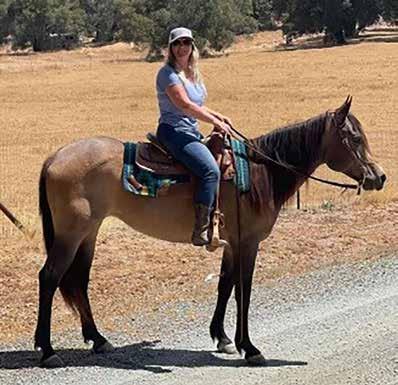
Welcome to the exhilarating journey that is 2024! This year, I'm taking the reins of the SMCHA presidency and riding solo, setting the stage for excitement and community engagement. But this is not a one-woman job, so I invite you to join me by attending, spreading the word, and raising your hand to volunteer at one or more of our fun and educational events throughout the year. From the Jack Brook dinner and campout to the elegance of the Spring Tea, the splendor of our Annual Gala honoring the remarkable Horse Woman of the Year, Jenny Mize, the enriching four-part Fall Riding Clinic, and the festive Halloween Play Day, there's a spectrum of opportunities to be a part of our vibrant community. If you have innovative ideas or dream of introducing a new event or activity to our roster, do not hesitate to share your vision. I eagerly await your emails and look forward to collaborating with you (email me, Sharon Butler, at missshaa61@yahoo.com).
In 2024 we are poised for community growth, boundless opportunities, and prosperity. Let's start the year on the right hoof by renewing your SMCHA membership or gifting a new membership to your loved ones. Or, why not place a reasonably-priced advertisement in our quarterly printed magazine, The San Mateo Horseman? Please consider contributing your time, treasure, and talents to ensure SMCHA thrives in the hearts and minds of our entire community, spanning generations.
Get ready for a year that will undoubtedly be etched into the history books! Let's make 2024 a milestone of shared achievements and cherished memories together.
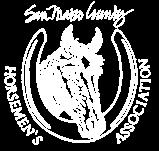
•
•
•
•
Chris
Also known as Pars Pituitary Intermedia Dysfunction (PPID), Cushing's is the most common endocrine disorder (a medical condition causing a hormonal imbalance) in equines. It most often affects older horses but has been observed in some younger than ten. In cases of PPID, the hypothalamus and pituitary gland fail to communicate appropriately. This failure of typical communication results in the pituitary gland becoming hyperactive, producing excess cortisol, a stress hormone. This process can cause symptoms such as poor wound healing, lethargy, infertility, shaggy hair coat, and ocular issues. It also puts horses at high risk for laminitis (inflammation of the laminae that anchor the coffin bone within the hoof capsule).
We used to wait for obvious symptoms to test for Cushing's, but more current research reveals that symptoms like failing to shed a winter coat are more advanced stages of the disease, and earlier screening may be helpful.
The pituitary hormone routinely measured for diagnosis of PPID is adrenocorticotropic hormone (ACTH). Depending on the time of year, sometimes ACTH levels are measured after a small dose of thyrotropin-releasing hormone (TRH) that will stimulate the abnormal pituitary cells to secrete more ACTH. TRH Stimulation tests are useful in diagnosing the disease in the early stages.
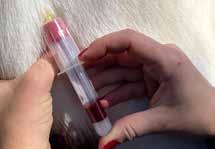
While PPID is not curable, both medical and daily management changes can reduce the condition's signs and symptoms. The most appropriate medication is pergolide (Prascend), a dopamine receptor agonist that helps decrease some of the hormone production by the pituitary gland. Other essential components of PPID management are the maintenance of excellent husbandry and general health care. Close attention to nutrition, vaccination, deworming, medical treatment, and horses' hoof care is recommended.
EMS is another endocrine disease characterized by insulin dysregulation and resistance and can also occur in younger horses. Causes of EMS include genetics, diet, environment, and, sometimes, coexisting PPID. These two endocrine diseases are often discussed concurrently as they greatly increase laminitis risk.


Breed predispositions to EMS include many pony and mini breeds, as well as Saddlebreds, Morgans, and Paso Finos. Horses may be 'easy keepers,' not requiring as much feed as their friends. Diet can also play a role, including a high-sugar-content diet or sudden access to lush, fresh grass.
Clinically, these horses may appear overweight and most commonly show regional adiposity (excess of fatty tissue). The fat deposition occurs at the neck, shoulder, and above the tail head. Interestingly, horses that gain weight in the belly region are at a lower risk than those that gain weight in the crest of the neck and tail head. The primary concern is that EMS will lead to laminitis, which can be life-threatening and difficult to treat.
Testing for EMS involves a thorough physical exam and blood tests to ascertain insulin, glucose, leptin, and thyroid levels.
The mainstay of treatment for EMS is nutritional management and weight loss. If diagnosed, your veterinarian may recommend transitioning hay and grain sources to brands with lower starch content. Sometimes, your veterinarian may also recommend medications to accelerate weight loss and sensitize the body to insulin again. Exercise is also essential to promote weight loss as long as the horse remains comfortable on its feet. Studies have shown that just 15 minutes of daily walking can improve horses' insulin sensitivity. Grazing muzzles can be used to reduce the amount of grass consumed. If your horse is also diagnosed with PPID, treatment with pergolide may improve the signs of EMS. Consult with your veterinarian to find out if endocrine testing is appropriate for your horse. Dr. Kristy Moding is a local veterinarian with Starwood Equine Veterinary Services. Her article is meant to educate horse owners but is not intended to replace the advice and expertise of your horse's veterinarian.
We offer both color and black and white advertising. See below for pricing chart and ad sizing. Please submit a camera-ready ad in either a PDF or .jpg format in RGB mode (color ads) or greyscale (black and white ads) at 300 dpi Interested? Email us at SMCHA@smcha.org.
Ad size (in inches) Without Bleed (margins)
Full Page
Half
Quarter
Business card
x 2.125
Ad size (in inches) with bleed (no margins)
One Full Page Only 8.75 x 11.25 (in inches)
Two-page spread 17.5 in. wide x 11.25 in.
Membership Rates:
San Mateo County Horsemen’s Association memberships are available from $30 to $60 per calendar year. You can either fill out and send in the membership form on the back cover of this magazine and send to: SMCHA, P.O. BOX 620092, Woodside, CA 94062-0092, Or simply complete and send through our website: www.smcha.org.
for the SPRING 2024 issue is May 1, 2024
SAN MATEO COUNTY HORSEMEN’S ASSOCIATION 2024 OFFICERS
PRESIDENT
Sharon Butler
1st VICE PRESIDENT
Mariangela Sonstegard
2nd VICE PRESIDENT
Gabriela Marquez
SECRETARY
Ceci Ellis
TREASURER
Cheryl Basin
COMPLIANCE OFFICER
Maria Fonseca
REGISTRAR
Tanya Rebarchik
2024 BOARD OF DIRECTORS
Cheryl Basin
Bonnie Bertetta
Sharon Butler
Don DeFranco
Ceci Ellis
Maria Fonseca
Adeline Forrest
Christine Friis
Susan Jakubowski
Gabriela Marquez
Jenny Mize
Lucia Mokres
Carey Lee Oberti
Elizabeth Ouellette
Marty Raynor
Tanya Rebarchik
Aleta ReedMarcy Rosenberg
Karen Rowley-Shawback
Mariangela Sonstegard
Annie Tyo
Deborah Vasquez
Carin Zeller
Honorary Board Member
Noel Moody
P.O. Box 620092
Woodside, CA 94062-0092
Visit our website at www.smcha.org
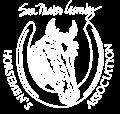
What is your first memory of being horse crazy?
I knew I was horse crazy after spending weekends as a working student in Florida.
Where were you? How old were you? What happened?
I started at eight years old in a small, modest barn where horse care was paramount. Mornings were spent learning barn chores: cleaning and bedding stalls, organizing tack, raking dirt aisles, and tidying the feeding rooms. After lunch, we would have semi-private lessons or go on a group trail ride. My first time cantering was on a trail ride bareback, and my trainer said, "Don't fall off, or you're walking back!" After riding, we would take the tack out to the orange grove and sit in the shade, swapping stories of horses we rode while sharing oranges with our horses who grazed on the lawn.
"The Leg Up." Who stepped in and made it happen for you? Was it a neighbor, parent, trainer, or friend?
First, Heather, my initial employer, started me off cleaning stalls but soon entrusted me with grooming and riding at a wonderful barn where camaraderie among boarders and care for horses were of utmost importance.
Then there was Mr. Ed, an infamous barn owner who gave me the opportunity to ride horses owned by absentee boarders, believing no horse should be idle. He was demanding and tough on employees but always for the benefit of the horses. Under his guidance, I discovered my passion for understanding and teaching horses. Last, but arguably most important, is my husband, Dom, for encouraging and supporting me to return to the industry after a 10-year hiatus.
What about your first horse or your "heart horse"?
How did they come into your life, and what did you learn?
I bought my first horse, Gwendolyn, from a cold voice message on my answering machine. I'll always remember getting home from school and listening to the message about a yearling paint/draft cross (as it turned out, she was probably neither of those!) and coming up with a scheme to convince my parents to let me buy her. We had a glorious four years together until colic took her from me. Then there's my heart horse, Pandora's Box, or Dora. Born to a sassy mare named Honey and a massive Palomino stallion named Pay Ya Saturday, Dora was wild from the start. Despite her initial reluctance, I made it my mission to earn her trust. A friend offered to buy her as a project from her breeder, and then gifted her to me when Gwen passed. Now, 21 years later, Dora remains by my side, teaching me valuable lessons in patience, humility, and perseverance.
Do you have a favorite story about your horse life?
Though not my favorite, this formative experience defined my path as a trainer. Under a remarkable mentor, I began training horses in my late teens, specializing in understanding and working with horses with unique quirks; I took on the ones whom trainers had given up.
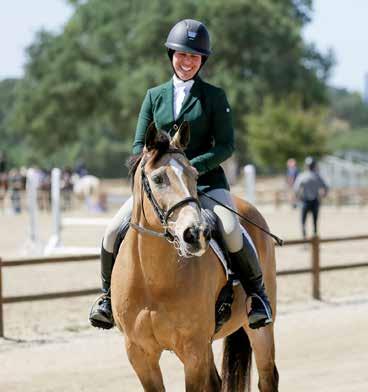
I also started working with young horses - starting them under saddle and ushering them through the beginnings of their show careers. As an adult, however, I now had bills to pay, and that often meant caving to owners who wanted their horses to show sooner or jump bigger. It just so happens I had a client who pushed for premature advancement with her mare. I knew she would leave me for another trainer if I didn't agree to her demands, so I agreed to her requests to move up a level, but the mare wasn't ready for the change in pace or height. On a warm-up day, the mare often stopped at jumps, and despite my pleas to let me get on her, the client refused. Despite misgivings, I acquiesced, resulting in a crash that shook my resolve. From that day forward, I vowed never to prioritize profit over the well-being of the horses I train, focusing instead on their happiness, fitness, and health.
As the founder, CEO, and Head Horse Whisperer at Demerara Stables, a boutique training facility on the Peninsula, my passion lies in young horse development and rehabilitation. Most of the horses under my care are jumpers or dressage horses. I prioritize their well-being by allowing them to live as naturally as possible, which has proven to prevent 90% of the physical and emotional issues associated with stall confinement.
My typical day involves caring for my small herd at home, focusing on keeping them fit and sound while gradually advancing their skills in jumping and dressage. By providing daily turnout in a spacious grass pasture, I've observed happier and healthier horses, resulting in reduced lameness, excess energy, and stress.
I'm also overseeing the expansion of Demerara Stables into a 40-stall training and rehabilitation facility on 260 acres in Half Moon Bay. Additionally, I manage the West Coast branch of the Young Horse Show Series, offering age-appropriate showing opportunities for horses aged one through five.
To further my expertise, I continuously educate myself by auditing clinics, staying updated on the latest training and rehabilitation techniques, and avidly observing training sessions. For more information about me or Demerara Stables, please visit demerarastables.com.
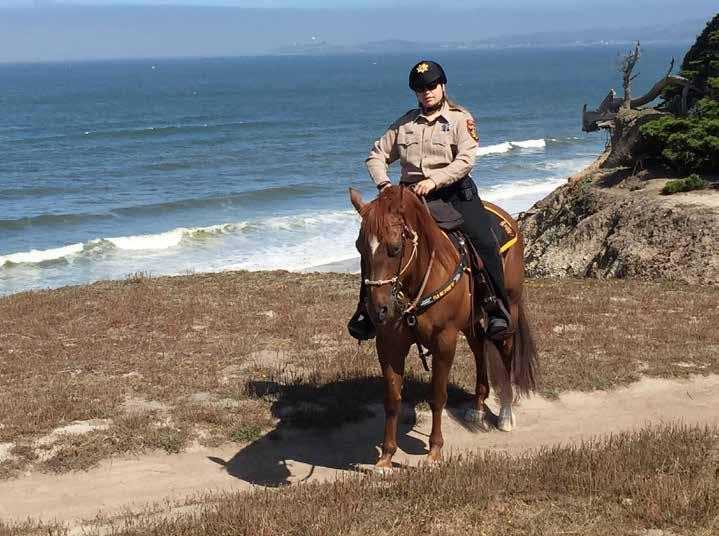
They say, "You're born with that horse gene." Anyone who has had horses knows how much hard work, dedication, and money goes into this lifestyle. At the end of the day, we are all incredibly blessed to be in the presence of these magnificent beings. As far back as I can remember, I have always been an animal lover; unlike many children in this area, I did not start riding horses until high school. I knew I always loved horses and would jump at any opportunity to be around them. Riding was just a bonus.
Noelle Rodolari gave me the opportunity to ride her horse, Red, on the beautiful local trails here in the Town of Woodside. Little did I know this network of trails would become my outlet for many years to come. Taking me under her wing and immersing me in all things horses, Noelle quickly suggested I join the San Mateo County Horsemen's Association (SMCHA) and tagged along for some of the Color Guard events Noelle and Red participated in. Meeting new people, whom I now consider friends and mentors, opened up a brand new world for me.
The SMCHA Color Guard unit soon took on a huge part of my
young adult life, and I quickly bonded with many of the team members. Soon after, Anne Whitten handed over the reins of Unit Leader to Christine Friis. I loved helping with the horses during events and soon became an essential part of this incredible team and, ultimately, the "Ground Crew Manager." The amount of work required behind the scenes leading up to the parades, performances, and competitions is unbelievable. I enjoyed every aspect of the team and soon learned how to help keep riders, horses, and bystanders as safe as possible in difficult situations. Soon, all these connections led me to an opportunity to own my very own horse! Nan and Kevin Daley owned a once-in-a-lifetime horse named Lil Joe, born at their home in Woodside in 2003. I never thought it would be possible to own my very own horse, but with the support of my parents, I officially bought my Lil Joe in May 2012. Thinking back on owning my first horse, I had no idea what in the world I was getting myself into. We have now been together for almost twelve years, and even though there have been a few challenges along the way, I wouldn't change this experience for the world. Learning to persevere through the inevitable bumps in the road is a life lesson that every equestrian will
experience, and the support of the horse community during these times is amazing. Lil Joe and I have accomplished many things together that I never thought possible. He is my heart horse, and I am forever grateful for everything we have done together. Every minute not sitting in my college classroom was spent at the barn. We all know how much work it takes to own a horse and all the other aspects that go into horse ownership. I have always loved grooming, mucking, sweeping hay scraps, cleaning tack, the smell of leather, fresh hay, and everything else that goes into being at and running a barn. Getting to know many other horses and their owners made me think that a career with horses would be a dream. I realized that many horse owners need help, so I started helping others at the barn. Soon after, looking through the local job postings on Bay Area Equine Network (BAEN), I stumbled across an ad for Webb Ranch, which was looking for lesson office staff. Working at Webb, I learned the names and how to identify 100 lesson horses, how to doctor wounds, tack many different disciplines, and lead more horses at one time than I ever thought I could handle! Like all horses, we often had ones that needed to be seen by the vet for various reasons. I was so intrigued by the medical procedures and thought this might be a perfect opportunity to learn even more from the vets who would come out to Webb.
In August of 2016, I was hired by Steinbeck Country Equine Clinics as a veterinary assistant for horses. While I had a huge learning curve, I was excited about the challenge and ready to learn about all things horses from a medical perspective. Working alongside a fantastic group of equine veterinarians, I quickly became a sponge, absorbing all kinds of information at every appointment. My background as a ground crew manager for the SMCHA Color Guard unit and the Webb Ranch lesson office
Continued on Page 38
My Grandma, Verla Mae, was born and raised in Des Moines, Iowa (1928). She was a hardworking, churchgoing farmgirl who loved to cook for family gatherings. My Grandma even rode double with me on my horse…bareback. She took every single picture of me on a horse as a kid. I remember her fondly because I spent much time with her when I was younger. So, in honor of Verla Mae, I’m sharing one of her recipes: Deviled Corn, a signature corn dish. Remember, Iowa has a lot of corn!!
1 can whole kernel corn
1 can cream corn
1 beaten egg
1-1/2 cup hot milk
½ cup flour
¼ teaspoon mustard
3 tsp Worcestershire sauce
2-quart baking dish
Saltine crackers
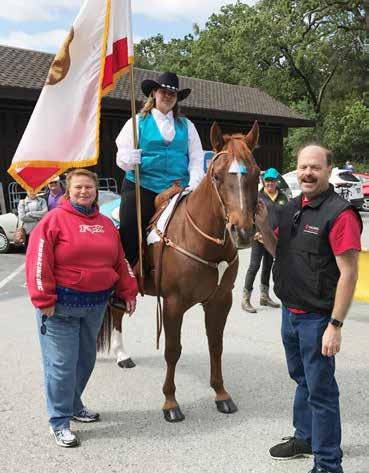
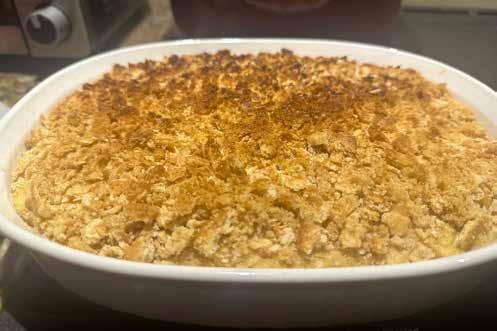
Mix together, cover with melted butter and crushed saltines, then bake at 350 degrees for 1 hour.
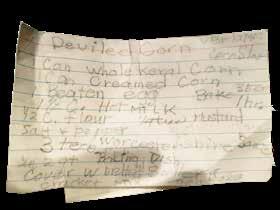
Carey suggests adding cheddar cheese and jalapeños (or green chilies) for additional flavor.
want to appear in Carey's column? If so, kindly forward it to Carey Oberti at careyoberti@gmail.com. Your submission might be showcased in our magazine!

Shoestring Farm, Pamela Daly, and Sophie Thesen would like to extend their heartfelt thanks to the San Mateo County Horsemen’s Association for their generosity in sponsoring fine horsemanship.
Sophie Thesen's journey into the world of horseback riding started at the age of six and was marked by fiery determination and passion. Despite facing initial rejection from various riding establishments, Sophie's commitment remained steadfast. Over the past eleven years, her riding skills have advanced remarkably, and she and the horses she rides are competing at levels above the trainers who initially dismissed her.
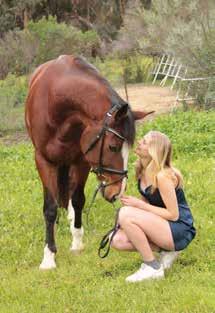
Today, Sophie gives back to the equestrian community through her endless help at Shoestring Farm. She teaches the youngest riders and trains the youngest horses (even the unruly ones). She's not afraid of picking up a pitchfork, mucking stalls, tacking up horses, and helping with Summer Riding Camp. Amidst her academic pursuits through remote high school education, Sophie is apprenticing under a Dressage Grand Prix trainer in Ocala, Florida. Sophie, with her trusty steed Amadeus, is tirelessly exercising, improving riding skills, and studying good equine principles. The support extended by the SMCHA empowered Sophie’s journey and ensured the perpetuation of equestrian excellence for generations to come.
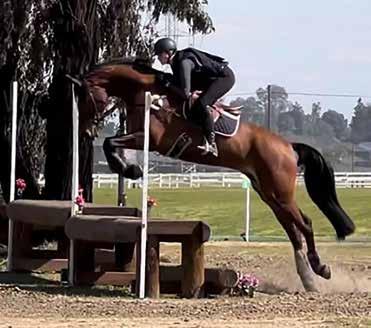
A 4th-generation Californian, Cherie Hammer was born and raised in San Mateo County and, other than a few years at college (UCD & Cal) and a stint in New York City in the late 1980s, has called the Bay Area home for decades. A life-long horse lover (growing up she always preferred her horse statues to Barbies), she didn’t learn to “properly” ride until her 30s. She has worked as an instructor and office manager at Spring Down Equestrian and last year retired after nine years as the Development Director at NCEFT. Most days, Cherie can be found either riding a friend’s adorable Percheron-cross, Wanda, in Woodside or at Spring Down Equestrian still trying to learn to jump after 20+ years! However, the best time she has ever had on a horse was doing mounted archery. She has two 20-something children (Zack & Zoe), three chickens (Pollo, Poulette & Frango), 2 parakeets (Decartes & Copernicus), and her beloved hound dog, Dante.

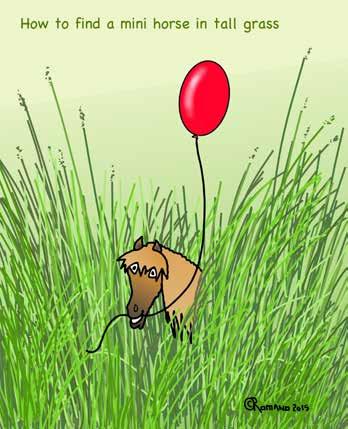
As I researched this article, an old adage kept coming to mind, "Let food be thy medicine." In 400 BC, Hippocrates had an intriguing outlook: food was not about calculating grams of protein or calories, but instead, food was nourishment for the body, preventing and curing ailments. When sick with a cold, do we reach for a fresh orange or juice with orange flavors? Are we thinking about boosting our immune system with an orange's Vitamin C, or are we calculating the grams of sugar, carbohydrates, and calories it may contain? Often, we miss out on many key benefits that come with the unaltered 'whole' food. Regarding equine nutrition, an apple a day could keep the Vet away - seeds, skin, core, and all.
Whole foods, by definition, are minimally processed, if at all. They provide bioavailable nutrients, more readily absorbed than inorganic forms commonly found in expensive supplements. Whole foods are not a single nutrient; they have multiple benefits, and there is no need to balance them. Nature does it for you. If your horse lacks a particular nutrient, I always exhaust whole food forms of nutrients before adding singular nutrient supplements. Over-consuming one micronutrient or not enough of another can impact the action and absorption of others, which leads you back to the original problem. For example, if your horse is low in magnesium, adding raw pumpkin seeds to the horse's diet may provide bioavailable magnesium, beneficial fats, and antioxidants, and they are also a natural anti-parasitic.

At the barn, my shelves are lined with canisters containing nutritious whole foods: raw pumpkin seeds, hemp hearts, chia seeds, and various dried herbs. The ingredients on my shelves didn't always look this way.
"Hay, on the other hand, is not a whole food because it is missing much of what it originally contained."
Another important function of whole foods is its key to digestion: enzymes. It may be better to reach for a horse-safe whole food that can provide balanced nutrients and other vital benefits. Heavily processed feed and pelletized forms lack the enzymes that live in all plants and seeds. The processing eliminates the enzymes. The equine digestive system is the gateway to nutrient delivery, tissue repair, and renewal. Simply put, whole foods equal a whole horse.
As we move down the food pyramid from forage to whole foods, we discover that forage can sometimes be considered a 'whole food,' but not always. Pasture is considered a whole food, but hay is not. Dr. Juliet M. Getty, Ph.D. Independent Consultant of Equine Nutrition, explains, "Hay, on the other hand, is not a whole food because it is missing much of what it originally contained." Hay is cut, dried, and baled in the sun, and many nutrients and enzymes are lost. Pelleted and cubed forms of forage are the most processed and not recommended. Many of us dream of having a pasture where our horses graze all day, an impossibility for most of us. Like myself, you may be keeping your horse boarded at a stable, and your horse may be lacking whole foods in their diet, but there are many ways to bring whole foods back into your horse's diet, minus the need for more real estate.
Dr. Juliet M. Getty
In the past, I attempted to properly weigh powders of various vitamins from supplement companies. But, when I read the fine print of ingredients, I discovered synthetic forms of nutrition (aka things you wouldn't find in nature). Next was the daunting task of perfectly administering the right ratio of nutrients to keep the other nutrients in balance (which is not easy to do if you do not know your ratios). Lastly, getting my horse to consume the powdered nutrients without it blowing away in one snort was challenging. Even with the careful supervision of an equine nutritionist, my senior horses continued to decline. I made a few observations:
1. My horse didn't look like he was enjoying that powder or pellet (which I now jokingly refer to as astronaut food).
2. I was making his diet much more complicated than it had to be.
3. If I were to perish in some unforeseen accident, no one would be able to replicate my feeding program.
I began researching a more effective way to balance my horse's limited diet, and that is when I started to include whole foods. Horses with variety in their diet have a much healthier microbiome. Many studies have shown that a healthy microbiome is the key to

longevity, brain health, and disease prevention. It took me only a short time to start incorporating seeds, herbs, and nuts into their diet.
Herbs are an integral part of the whole food category. According to many holistic equine nutritionists, including Dr. Tom Schell, D.V.M, CVCH, CHN and clinical researcher at Nouvelle Research, Inc., "Herbs are included as a whole food because they contain macroand micronutrients. Macronutrients include fats, proteins, and carbs. Micronutrients are numerous and include vitamins and minerals." Herbs also contain polyphenols, which are plant chemicals found in the outer layers of the leaves and stems of most plants. They can also be aromatic, found in the flowers and the fruits/seeds of wild plants, which the equine gut is specially designed to break down the hard outer area of seeds and stems. Fresh or dried herbs like milk thistle can benefit the digestive tract, increase gut biodiversity, and improve overall wellness. One very powerful herb that has replaced the non-steroidal anti-inflammatory drug (NSAID) is turmeric. While NSAIDs can disrupt a horse's microbiome along with a host of other side effects, turmeric is a powerful anti-inflammatory, antiviral, and antioxidant that can reduce arthritic pain in the same way whilst benefiting the horse in many other positive ways.
Chia seeds, another whole food, are touted for being great for horses prone to ulcers, colic, and metabolic conditions. They are high in omega 3s and 6s. Hemp hearts are another highly palatable superfood rich in Vitamin E and amino acids. Horses rely on various plant protein sources to meet their amino acid needs, and hay is typically lacking. Adding hemp hearts may not only give your horse's coat a shine, but may help aid in heart health, muscle recovery, promote joint, and digestive health, while growing stronger hooves. Many nuts are not only safe for horses, but can also be very beneficial. California is notorious for its deficiency in an essential mineral called selenium. Brazil nuts are high in selenium, as well as Vitamin E, and adding only a small handful may fill in the nutrition gap while providing protection from oxidative stress. Caution must be used to not exceed the selenium requirement as it can be harmful. Luckily there is a blood test to ensure your horse is getting the right amount of selenium. Adding whole foods is easy and buying in bulk can be affordable.
There are so many whole foods that can nourish and heal your horse in more ways than just one, with new research studies slowly playing 'catch-up'. Luckily, there has been an increased trend in whole foodbased companies in the equine market today, with companies like Hilton Herbs, CurOst EQ, and Silver Lining Herbs. Many companies are even beginning to shift away from single-ingredient supplements to whole-food options. Equine Elixirs developed a forage and whole foods-based hoof supplement called 'Crackdown'. Crackdown's ingredients are a blend of quinoa, pumpkin seed, sesame seed,
Chia seeds, another whole food, are touted for being great for horses prone to ulcers, colic, and metabolic conditions. They are high in omega 3s and 6s. Hemp hearts are another highly palatable superfood rich in Vitamin E and amino acids.
almonds, chickpeas, lentils, oats, kale, spinach, and Brazil nuts. Companies like Hilton Herbs have taken away your need to grow an herb garden for your horse by developing blends of superiorly sourced, whole ingredients that can easily be added to your horse's meals. Now, with so many whole food options, there is no reason your horse should be missing out!
Disclaimer: Before making any changes to your horse's feed or supplements, it is crucial to consult with a qualified veterinarian or equine nutritionist. The information provided in this article is for general guidance only and should not be considered a substitute for professional veterinary advice. Incorrect feeding practices may lead to health issues, including nutritional imbalances, digestive problems, or metabolic disorders.
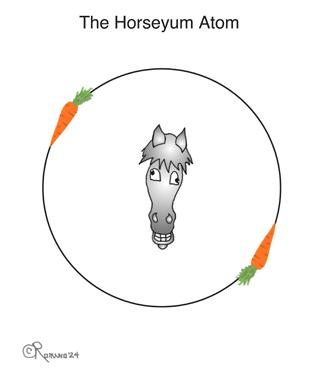




Information from the California Department of Food and Agriculture, as edited by
Rachel Curtis-Robles, Ph.D.,San Mateo County Mosquito and Vector Control District
Mosquitoes spread West Nile virus, causing a wide range of clinical illnesses in both people and horses. While there is historically a low risk of acquiring West Nile virus in San Mateo County, the first equine case was detected in the fall of 2023. Although the risk in San Mateo County may be low, the risk is higher in many other areas of California. If your horse travels, you may like to take additional precautions when away from home.
While many horses may not develop clinical illness, some horses can develop a fatal form of encephalitis (inflammation of the brain). Consult a veterinarian if your horse exhibits any of the following:
• Fever,
• Incoordination, especially in rear limbs, causing stumbling and falling,
• Generalized weakness, muscle twitching seizures, or coma,
• Drooping lips and lip-smacking, head drooping, grinding teeth,
• Hypersensitivity to touch or sound and/or,
• Recumbency (inability to rise).
Any horse displaying abnormal behavior should be examined by a veterinarian, who will rule out other diseases and will likely take a blood sample for testing. Currently, there is no specific treatment for West Nile virus other than supportive care, which includes administering anti-inflammatory drugs and intravenous fluids. Recumbent West Nile virus-positive horses are at a higher risk of dying or requiring euthanasia. For horses showing clinical signs of West Nile virus, the fatality rate is approximately 33%; however, many infected horses will fully recover following infection.
The following steps should be taken by all horse and barn owners:
• Equine vaccinations are available, and the American Association of Equine Practitioners (AAEP) recommends a West Nile virus vaccine as an annual core vaccine.
• Reduce horses’ exposure to mosquitoes by stabling horses during active mosquito feeding times (dusk and dawn) and using fans, screens, flysheets, and repellents (permethrin or pyrethrin—look for one that has an EPA registration number and always follow label instructions).
• Mosquito Control is essential. Mosquitos only need a little bit of water to breed. Remove any non-necessary water, including checking wheelbarrows, discarded tires, folds in tarps, and puddles under leaking fixtures. Water should be dumped out at least once weekly to prevent mosquito larvae from growing.
• For water tanks and ponds, consider stocking with mosquitofish (fish that eat immature mosquitoes) or using mosquito ‘dunks’ to treat the water—water treated with mosquito dunks is safe for horses and other animals to drink.
• Talk with your veterinarian about West Nile virus vaccine options
• Visit www.cdfa.ca.gov/AHFSS/Animal_Health/WNV_info. html to learn more about equine West Nile virus
• Visit https://westnile.ca.gov/ to learn more about West Nile virus in California
• Visit www.smcmvcd.org or call 650-344-8592 to request mosquito fish or learn about mosquito control options
Rachel Curtis-Robles, Ph.D.Public Health Education and Outreach Officer
San Mateo County Mosquito and Vector Control District, 1351 Rollins Rd. | Burlingame, CA 94010 Office: 650-344-8592 | Fax: 650-344-3843
rcurtis@smcmvcd.org | www.smcmvcd.org
Follow us: Facebook.com/SMCMVCD | Twitter.com/SMCMVCD

I must have been around ten years old when I first read Black Beauty: His Grooms and Companions, the Autobiography of a Horse, the life story of a horse told in the first person… er…horse. Our emotions swing up and down as we follow Beauty’s journey from home to home; some harsh, some kind. Always a sensitive child, I remember crying over Beauty’s account of the check rein, applied by a cruel society lady to force a fashionable, but painful, high-headed carriage.
Last September, in the London Times Literary Supplement Mary L. Shannon reviewed the new book, Writing Black Beauty—Anna Sewell, the Creation of a Novel and the Story of Animal Rights by Celia Brayfield. Brayfield’s book and Shannon’s review open up a new and somewhat comforting look at this old classic. Citing Brayfield’s book, Shannon’s review and a follow-up letter to the editor describe in depth Anna Sewell’s life and her relationship to horses. At age 14, Sewell

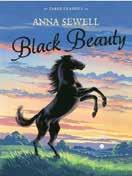
had a debilitating fall and broke both her ankles. She was never able to walk properly again, and she relied on horses to provide comfort and mobility. Although animal stories had been popular since Aesop’s time, 550 BCE, Sewell is credited with being the first to relate a tale in the voice of the animal. (The first-horse account of joys and horrors in Michael Morpurgo’s War Horse, 1982, has dubbed it a sequel to Black Beauty.)
At its initial publishing in 1877, Black Beauty at once had a strong impact on, and lasting significance for, animal rights movements around the world. In particular, it aroused increased sympathy for the Royal Society for the Prevention of Cruelty to Animals (1824) and later the American SPCA (1877).
In 1878, at age 58 and just a few months after the publication of her only book, Sewell died from complications of being a lifelong invalid. Happily, she lived long enough to enjoy the immediate, overwhelming success of Black Beauty I encourage you to read this book again. Read it with your children and grandchildren. Teach them about how Black Beauty helped save animals from brutal treatment, as we see from the increasing involvement of the American Humane on movie sets. American Humane’s Humane Hollywood™ monitors over 1,000 productions per year, helping ensure the safety and humane treatment of animal actors. Look for “No animals were harmed in the making of this movie.”

Thanks to the efforts of SMCHA and Don Pugh, we had the great honor of meeting John McDonald, Co-Director of the film documentary, Call Me Mule. John traveled to Woodside to show his movie, in person, to the equestrian community at Woodside’s Town Hall in November. The film was amazingly powerful, leaving everyone with a profound sense of wonder for Mule's unconventional yet inspiring life.
Call Me Mule follows the journey of John Sears, AKA Mule, a 65-year-old man who has been traveling across the western United States with his three pack mules for many years. The documentary dives deep into Mule's yearning for a simpler lifestyle in line with nature, citing concern over urban sprawl, the loss of open spaces, and our growing dependence on automobiles.
Inspired by a chance encounter, John McDonald joined Mule on a 27-month adventure, capturing their experiences in cities, suburbs, and the wilderness. Narrated in Mule's own voice, the film portrays the challenges he faces on his nomadic path, including clashes with law enforcement that result in fines, arrests, and even institutionalization. Call Me Mule highlights the enduring resilience of an individual who, against societal norms, continues to walk his path with unwavering determination, leaving an indelible mark on those who encounter his remarkable story.

Follow John McDonald on Facebook (https://www.facebook. com/3MulesMovie) as he travels the world showing his thought-provoking documentary. You can contact John through his website: https://mcdonaldproductions.com/projects/mule

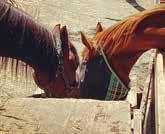
Hope you are enjoying The Water Trough (a rider’s version of the Water Cooler!). Let us know what’s new and exciting in your lives. Let’s bring our community together by sharing news, fun facts and information! Got something to share? Send your info to me, Elizabeth Ouellette @ elizabetho@outlook.com
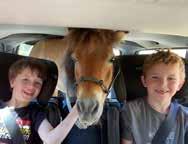
Loving wonders never cease; one such is Katie, the mini horse! She can go inside homes wearing slip-proof socks to prevent slipping on slick surfaces. Katie has brought friendly, loving cheer to skilled nursing facilities, schools, and people homebound with illness. She also made a young girl's Quinceanera celebration perfect. Katie has participated in the Woodside Day of the Horse and May Day Parade. She's enthralled people in campgrounds and at the beach. We are so lucky to have her in our SMCHA family!
Mike received the 2023 Outstanding Horseperson Citizen Award from the Mounted Patrol of San Mateo County for his service, trail work, and advocacy. His work in 2023 included preparing for emergencies with San Mateo County's Large Animal Evacuation Group. Active in ETRAC (Equestrian Trails and Roads Action Committee), Mike has been a reliable presence at local government meetings to voice equestrian concerns and needs. Not only does he help out at Jack Brook Horse Camp and work with San Mateo County Volunteer Horse Patrol, but Mike was also instrumental in re-building the Towne Creek Bridge this past fall in Pescadero Creek County Park. Last but not least, he's an all-around great guy!
We’d like to extend our deepest condolences to Deb and her entire family on the loss of her beloved sister, Alynn Mathis (at right with her paint mare Lilly). Alynn was loved and will be missed by the entire horse community.
"Breathe gently...every breath is a gift of life. Breathe and enjoy this very moment..." This is Living - Practicing the Presence of God
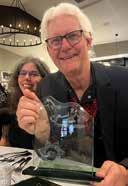
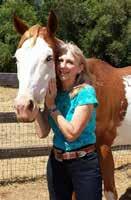
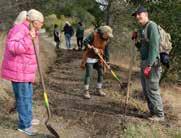
A crew of eight SMCHA volunteers (mainly from Webb Ranch) constructed water breaks to prevent erosion on the Clarkia Trail. Ranger Stuart Smith of the San Mateo County Parks Department provided the tools to get the job done. Reports of success have already been "pouring" in! Special thanks go out to Beverly Kane for her organizational efforts.

Bob and Marcy Rosenberg’s new 1.5-year-old dog should have been named Battery instead of Woody because he is full of stored-up energy. Here is Bob preparing to take him out for a two-mile run on a recumbent bike fitted with a harness. When Woody gets home, he’s ready to recharge his batteries.

This year's SMCHA Board Appreciation Dinner was a delightful event held at Luttickens in Menlo Park. Board members gathered to share stories, enjoy delicious food and beverages, and celebrate their hard work and dedication to the club. Each member received a beautiful travel blanket as a token of appreciation.
A heartfelt thank you goes out to all SMCHA Board members, past and present, for their selfless commitment of time and effort to our club. If you're interested in being considered for next year's board of directors, please reach out. We are always looking for enthusiastic individuals ready to make a difference!
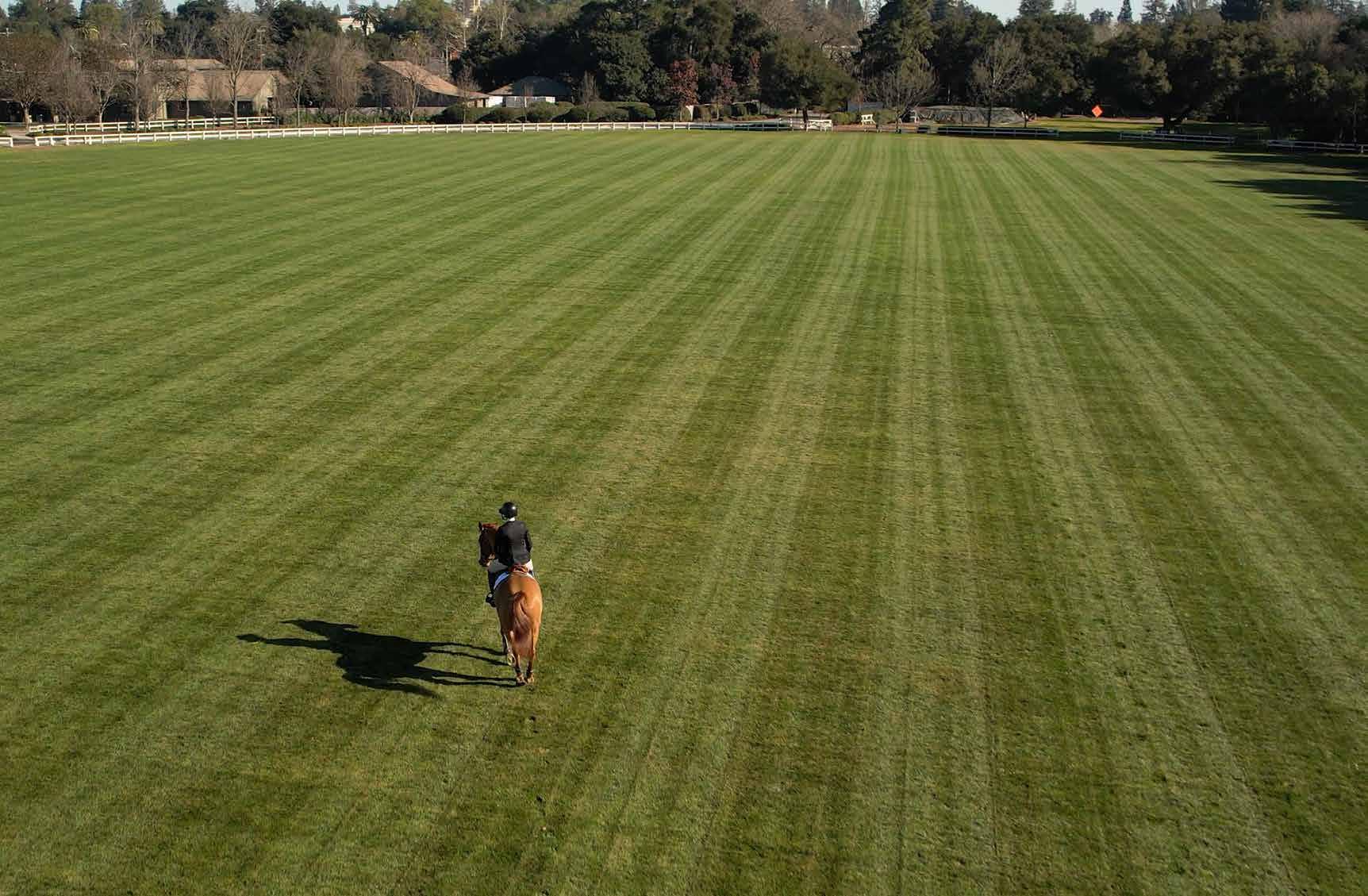
Portola Valley Estate on 12 acres
Half Moon Bay 265 acre horse property
San Gregorio 40 acre horse property
Palo Alto - Coming Soon
San Francisco Loft Near Ballpark - Coming Soon
Woodside Estate - Coming Soon
PHOTO: Menlo Circus Club, Atherton CA
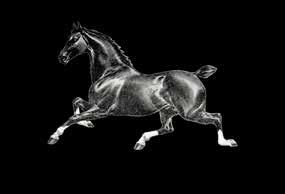
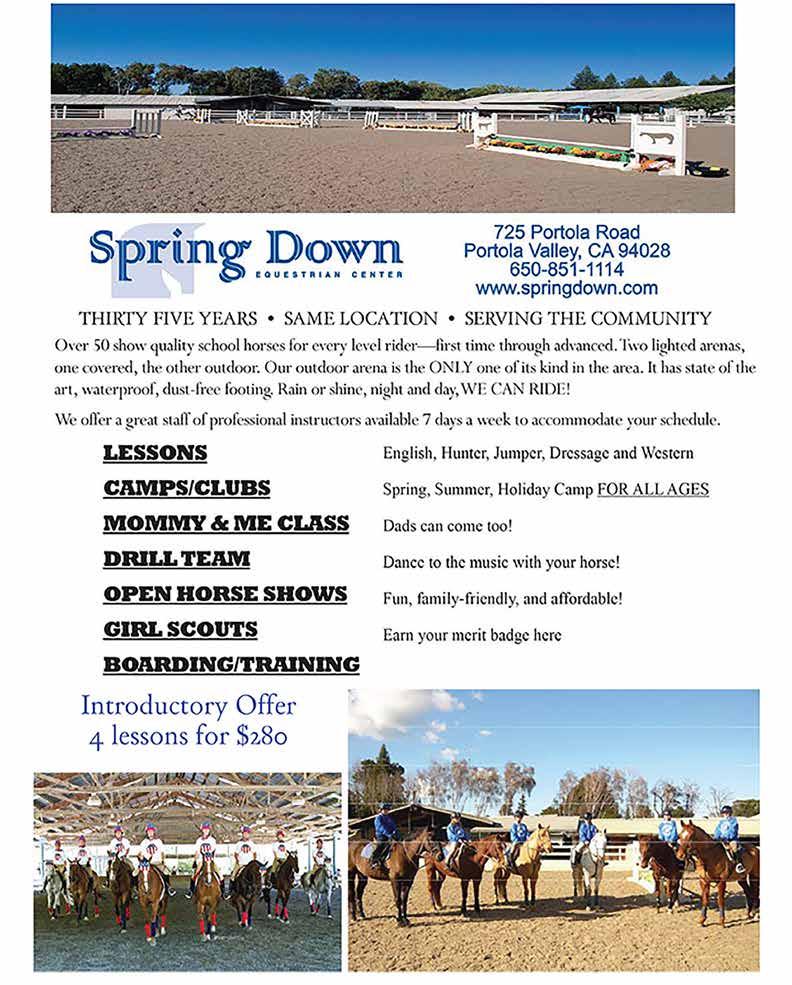
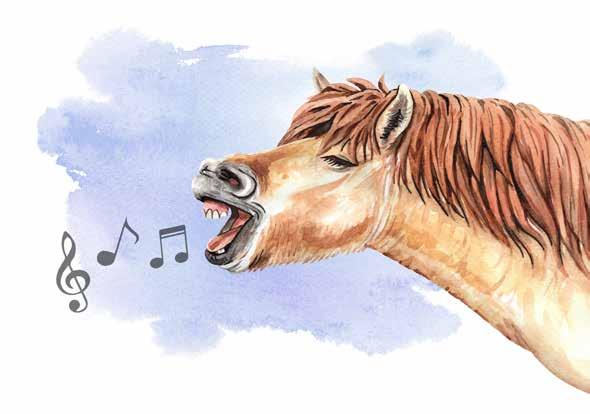 Michelle Li, at Anderson Equestrian, Portola Valley Training Center
Michelle Li, at Anderson Equestrian, Portola Valley Training Center

Up Where We Belong, by
Joe Cocker and JenniferWarnes
My horse’s show name is Crescendo. At the barn, we call him Jack. I’m an older rider, age 61, who started in my forties at Spring Down because my ten-year was riding there. I’m competent, but still need a partner who teaches and takes care of me, not being an especially athletic person. Jack and I do Hunters and Equitation and will always be pre-adult. Jack’s theme song is Up Where We Belong by Joe Cocker and Jennifer Warnes. You might not know it because it was released in 1982. I chose it because I could easily rewrite some of the lyrics which are below. (Work Cited: Crocker, Joe and Warnes, Jennifer. “Up Where We Belong.” 1982. https:// en.wikipedia.org/wiki/Up_Where_We_Belong)
Who knows what tomorrow brings?
In a world, few hearts survive
All I know is the way I feel
When it’s real, I keep it alive
The course is long, there are fences in our way
But we practice a bit each day
Jack, lift us up where we belong, where no birds fly
About two feet high
Jack, lift us up where we belong, far from the dirt below
You know, where we don’t want to go.
Some hang on to the reins too tight
Ride their courses looking down
All we have is here and now
All our rides, out there to find
The course is long, there are fences in our way
But we practice a bit each day
Jack, lift us up where we belong, where no birds fly
About two feet high
Jack, lift us up where we belong, far from the dirt below
You know, where we don’t want to go
Time goes by, no time to cry, life’s you and I Alive today
Jack, lift us up where we belong, where no birds fly
The road is long, there are mountains in our way but we climb a step every day.
Love lift us up where we belong, where the eagles cry on a mountain high
Love lift us up where we belong, far from the world below
We know, up where the clear winds blow
Some hang on to used to be Live their lives looking behind

The phrase "get off your high horse" is an idiom used to advise someone to stop being arrogant, condescending, or self-righteous. It suggests that the person should abandon a haughty or superior attitude and approach a situation with more humility or a down-toearth perspective.
The origin of the expression can be traced back to the use of horses as a symbol of status and authority. In the past, high-ranking individuals or officials often rode on horses, which elevated them above others in a literal and metaphorical sense. So, telling someone to "get off their high horse" implies a need to come down to a more relatable level, abandoning a sense of superiority. The phrase has become a common way to advise someone to be more humble or less arrogant in their demeanor.

We're thrilled to have you join us on this exciting journey. Whether you're here to learn, share, or connect, we're all about fostering a supportive equestrian community where everyone can thrive. Together, we'll make this experience truly unforgettable!
Anne Chen
Bayhill Equine
James Quinn
Kim Hansen
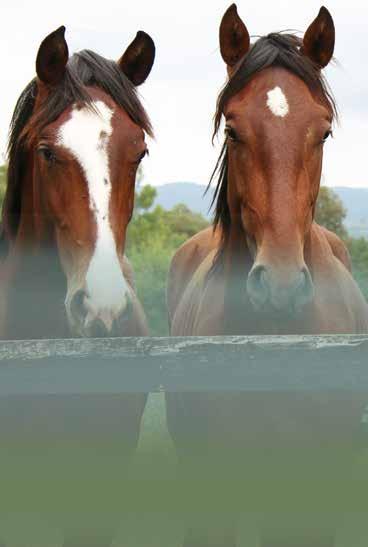
Melinda Stoker
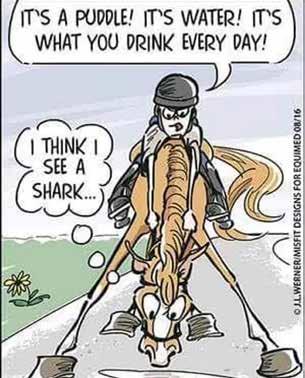







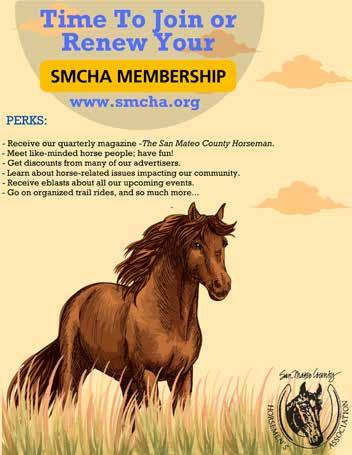
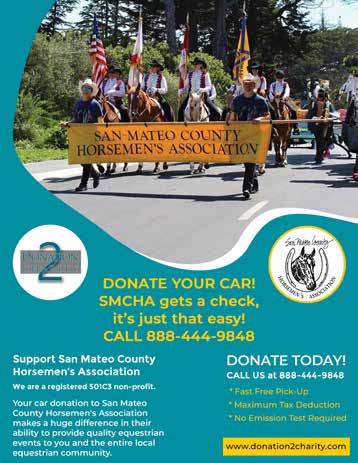

On December 10, 2023, NCEFT in Woodside was the welcoming site of SMCHA's annual potluck holiday party. The weather was perfect, allowing for an outdoor event and encouraging excellent attendance. As always, Santa made an appearance and was very popular. While the party itself was free to attend, it also served as an essential fundraiser for SMCHA, thanks to the final wreath sales as well as the generosity of donors to our drawing and silent auction. SMCHA especially thanks Gabi Marquez, Tony Agredano, Sharon Butler, Chris




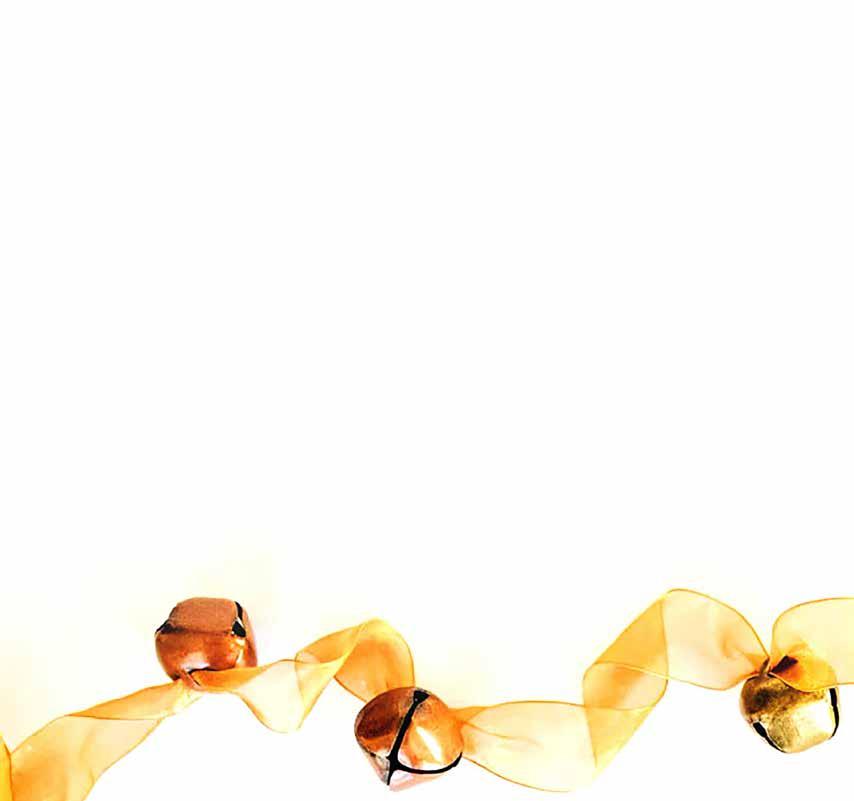
and Ken Brock of Peninsula Feed. We had so many donations that the odds of winning something were great! We also wish to send a shout-out to Marty Raynor for coordinating with NCEFT to provide the venue. As always, the party showcased many delicious specialty dishes from our community, including Tanya Rebarchik’s VERY popular hot mulled wine and Cheryl Basin's famous turkey chili. The highlight of the afternoon was the spirited announcement of the 2023 Horsewoman of the Year, Jenny Mize.
Proving the point that the Holiday Party is a family affair, Cary Oberti's children, Elwin and Emery, sent in their thoughts about the party:
Elwin, 6 years old, wrote, "I went to the SMCHA dinner. I ate food. It was good. I saw Santa and told him what I wanted for Christmas. I took a picture with him. I had cupcakes, too. I can't wait for next year.”
Eight-year-old Emery reported, “I really, really loved going to the San Mateo County Horsemen's Christmas party. I was happy to see Santa. While I was playing hide
Continued on Page 32
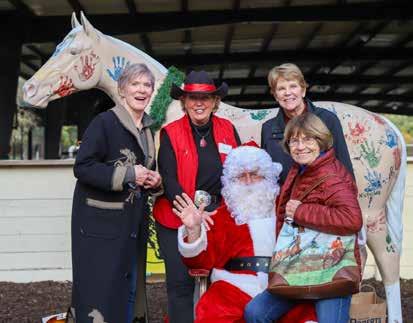
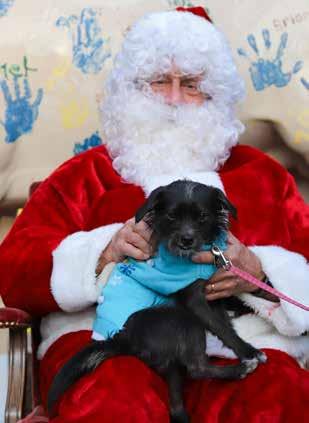

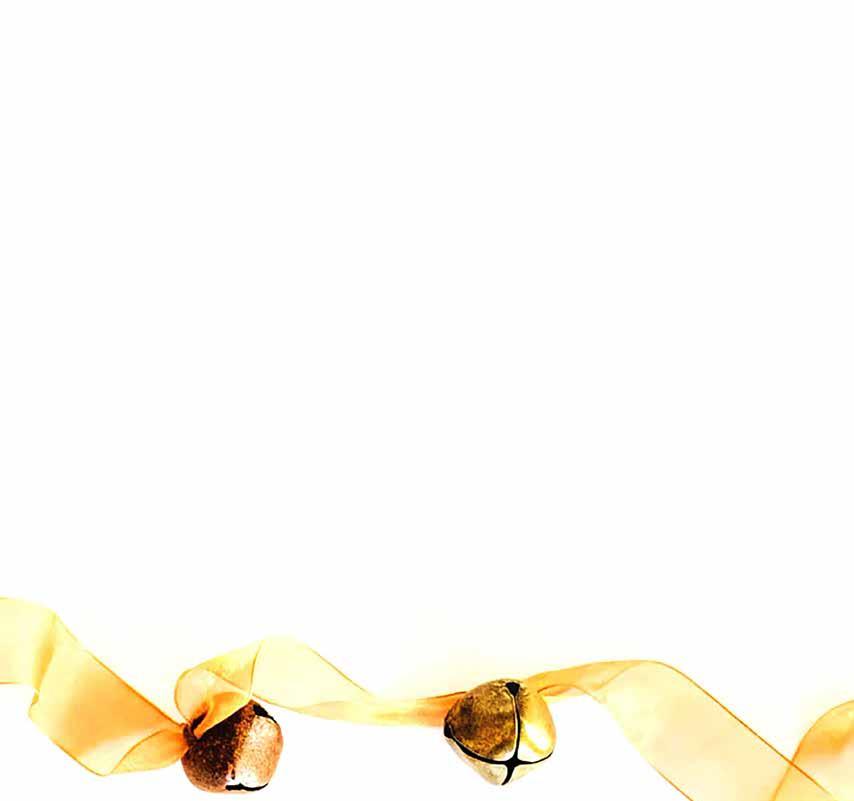

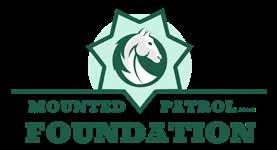
A 501 (c)(3) organization supporting and promoting equestrian activities
The MP Foundation completed another successful year in supporting the equestrian environment. We are pleased to announce that grants to the community have just passed $636,186, since founding in 2002. Over 68% of this came from generous contributions from many folks and organizations, for which we and the recipients are forever grateful. This year we have awarded a total of $75,131.
Major projects include:
➢ $16,328 Town Creek Bridge repairs
➢ $15,500 Trail repair—Pescadero Creek County Park
➢ $8,523 Western Heritage Scholarship
➢ $5,400 UC Davis Vet School
➢ $5,000 Equestrian Merit Scholarship
➢ $3,000 Rodeo Scholarships
➢ $2,880 NCEFT
➢ $18,500 Other projects

Bridge is done. Thanks to Mike Bushue and his team of volunteers.
Resolution thanking SMC Parks. Signed by 15 equestrian groups. Presented in December 2023.



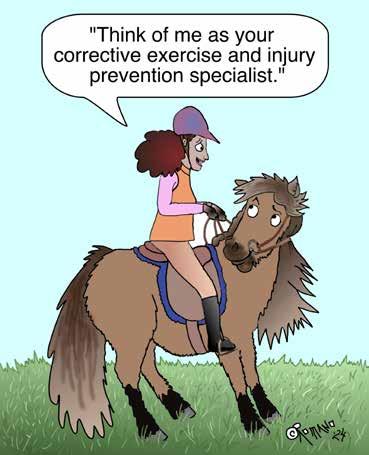

Continued from Page 28
and seek with Elwin and Xander, Auntie Michelle said, "Boys, talk to Santa about what you want to get for Christmas." We also took a picture with Santa, and we had good food. And after getting a photo with Santa, we went back to playing hide and seek. I hope to come back next year.”
Thank you to all the volunteers who helped to prepare, set up, and clean up after the event. A huge thank you to Carin Zeller for her immense help in managing our supplies and decorations—she does this for SMCHA year-round, and members like her make our organization successful.
If you are looking for a fun and relaxing outing or an opportunity to connect with other equestrians in the community, keep an eye out on the SMCHA website and Facebook page for flyers and announcements for upcoming events in 2024 and mark your calendars for the 2024 Holiday Party!



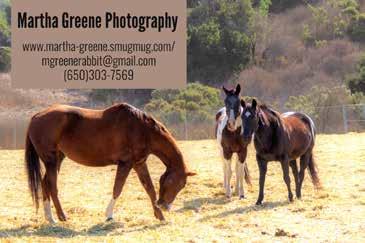
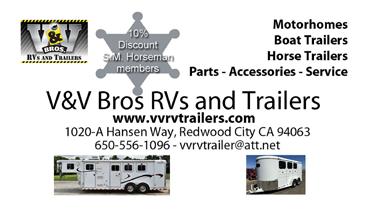
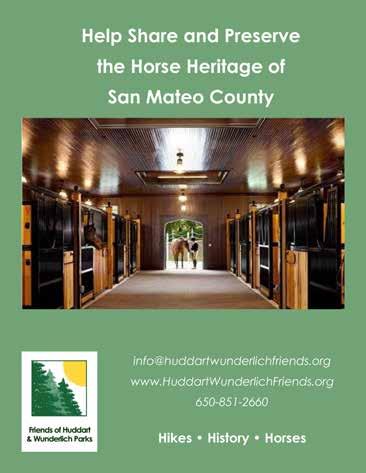

As we embark on a new year, we wanted to take a moment to extend our sincerest gratitude for the incredible support of all donors. Your generosity has made a meaningful impact on the success of our programs and initiatives, allowing us to continue making a positive difference in the lives of horses and horse enthusiasts throughout San Mateo County. Thank you for your support as we work together to keep the spirit of horsemanship alive.
Adeline Forrest
Aleta Reed
Alexis Bartlo
Anne Van Camp
Annie Tyo
Betty & Allen Schott
Bonnie Bertetta
Butch Coggins
Carin Zeller
Cheryl Chandler
Cherie Hammer
Cheryl Basin
Christine Friis
Dennis and Dianne Garcia
Don DeFranco
Elizabeth Beasley
Elizabeth Ouellette
Ellie Ferrari
Faye and Emmet Brophy
Friends of Huddart & Wunderlich
Gaby Marquez
Gladys Martines
Jo Egenes
Joyce Burden
Karen Rowley-Shawback
Katy Farquharson
KC Branscomb
Kristina Chancholo
Larick and Fawni Hill
Lorna Traube
Maggie Bedecarre
Mark Lindberg
Marty Raynor
Michelle George
Nancy Traube
Noel Moody
Patricia Scarlett
Peninsula Feed
Penny Donnelly
Ron Johnson
Ronda Goldman
Sara Jorgensen
Sharon Butler
Sharon Himebrook
Susan Lang
Tanya Rebarchik
Tony Agredano
Woodside Bakery

You might tie your horse to a ______ing post.
Ball game played on horseback using mallets
2023 SMCHA Horseperson of the year Jo
Club used in baseball to hit the ball.
Acronym of this horse group
Horse gear
A thing you do when you're sleepy
Restaurant on Skyline named after the famous song
Exist
Expressing hesitation
1st president of SMCHA
Article used with words beginning with a vowel
Boarding facility on Portola Rd in Portola Valley
Dined
This 900-acre, forested park in Woodside offers riding trails, plus picnic areas & an archery range.
On ____ of Old Smokey
Headwear
Measurement used to determine a horse's height.
Horse breed featured in this issue
Horse breed or actor Freeman
Straps that go from the bridle to the rider ’s hands
Equestrian competition combining dressage, cross country and show jumping
Leaning tower
My horse says hello with a soft ______________.
Horse's headgear
Former currency of Italy
Child's game ___________ and Seek. They are no taller than 14.2 hands
Small child Pants that are close-fitting, especially around the calves, so they fit inside tall riding boots.
Eventing facility off Sand Hill Road
Woodside Restaurant with knickknackfestooned decor
The part of the saddle where a rider sits. Sandy area near the ocean
Pants originated by Levi Strauss
The part of the lower leg between the fetlock and the foot on a horse
A horse's sudden movement away from something because it is frightened
2024 SMCHA President
White marking from the foot to about halfway up the horse’s lower leg
Roy Roger' Horse
Fictional horse Black _______
Command to stop a horse or horse nonprofit based in Woodside
Trail in Edgewood sponsored by SMCHA
Two beat gait
Park where Folger Stable is located 2024 SMCHA Horseperson of the year
Child's game with "You're' it!" phrase
The ______Horsemen of the Apocalypse
Opposite of yes
Make stitches
Horse gait in which horse has all the feet off the ground
3.14159
Glide on the snow
Medical device used to restart a person's heart
In reference to (abbreviation)
Used during competitions to keep a mane from tangling
Gentle giants of the horse world 53
Open space or building used for horse training exercises
Loot A large amount
Horse boarding facility in Portola Valley that hosts many SMCHA events: ______ Ranch Departure
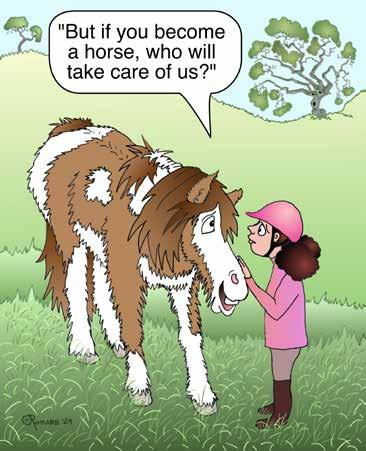
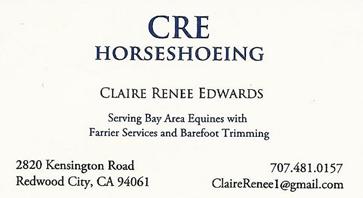


Would you like to meet new people who share your passion for horses? Do you have a unique talent or an idea for an activity/ ride to share? Maybe you’ve always wanted to put on your own event but needed the support of an equestrian committee. Now is the time to bring your ideas to the forefront. The SMCHA wants to hear from you! If you’d like to join our team, have fun and make your dreams come true, send us an email so we can bring your vision to life!
Email: SMCHA@smcha.org
Advertise your business to a broad array of readers in our popular magazine, The San Mateo County Horseman Advertising with SMCHA is a great way to reach potential customers four times a year! We’ll not only print your ad, but also make mention of our business on our website — smcha.org
Email: SMCHA@smcha.org
Mariangela Sonstegard @ 650.868.4702
SMCHA Board of Directors
Open Position
Don DeFranco @ 415.722-7259
Elizabeth Ouellette @ 650-248-3409
Sharon Butler @ 650-720-0513
Mariangela Sonstegard @ 650-868-4702
Karen Rowley Shawback @ 510.432.0368
Elizabeth Ouellette @ 650-248-3409
Jenny Mize @ 650.380.1574
Adeline Forrest @ 650.743.1665
Cheryl Basin @ 650.722.0606
Elizabeth Ouellette @ 650.248.3409
Marcy Rosenberg @ 408.560.8074
Cherie Hammer @ 650.219.7917
Tanya Rebarchik @ 650.867.2987
Cheryl Basin @ 650.722.0606
Check our website for updates: www.smcha.org
March
14 — Board Meeting
28 — Dine 2 Donate: Woodside Roadhouse Burgers and Brew
April
13 — SMCHA Board Meeting
May
2 — Dine 2 Donate: Sanchos Taqueria
9—Board Meeting
June
13 — Board Meeting
July
11— Board Meeting
18-22 — SMCHA at Jack Brook
August
8 — Board Meeting
September
12 — Board Meeting
15 — SMCHA Fall Riding Clinic
22 — SMCHA Fall Riding Clinic
29 — SMCHA Fall Riding Clinic
October
6 — SMCHA Fall Riding Clinic
10 — Board Meeting
11-13 — Day of the Horse (WHOA)
27 — SMCHA Halloween Play Day
November
14— Board Meeting
December
TBD — SMCHA Holiday Celebration

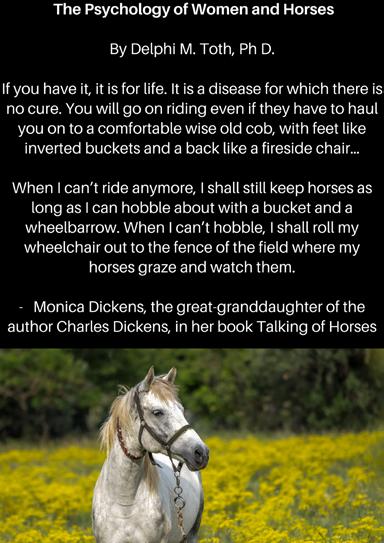
Continued from Page 9
prepared me to become an organized and efficient veterinary assistant, safely handling even the rankest horses. The name of the game in this profession is to be one step ahead of the doctor at all times to help the appointment be as safe and efficient as possible. Like with the Color Guard Unit, everything that happens behind the scenes in a veterinary practice would astonish anyone who has never experienced it. Learning to stock the vet truck with all the supplies needed for the day's scheduled appointments and all the emergencies that tend to pop into the mix at any given moment is a challenge. Working in this profession, we often see horse owners anywhere on the spectrum, from extreme highs when their equine partner was thriving and during some of the darkest and saddest moments when making heartbreaking decisions. I take pride in trying to be a quiet, calming presence no matter the situation. I am lucky to have come to know many extremely hardworking, passionate veterinarians and amazing clients who have become lifelong friends.
A special thank you to both of my parents for their continued support throughout the years because none of this would be possible without them. Going back to that horse gene we seem to be born with…. I'd like to thank my Mom for passing that on to me!
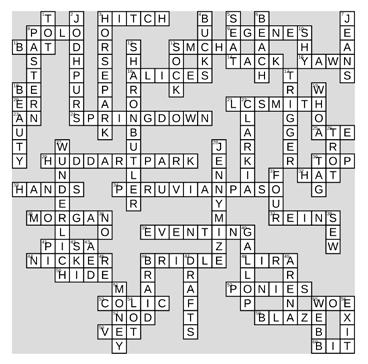
Bay Area Players: www.facebook.com/BayAreaSavvyPlayers
Backcountry Horsemen of California: bchcalifornia.org
Bay Area Equestrian Network: bayequest.com
Bay Area Horse Archers – bayareahorsearchers.com
BLM Wild Horses & Burros, California: wildhorseandburro.blm.gov
California Dressage Society: dressage.org
California State Horsemen’s Association (CSHA): californiastatehorsemen.com
Community Horse Advocacy Program (CHAPS): www.facebook.com/chapsmc
Disabled Equestrians: disabledequestrians.org
Equestrian Legacy: equestrianlegacy.com/home
Equestrian Trail Riders' Action Committee (ETRAC): www.etrac-equestrian.com
Horse Park at Woodside: horsepark.org
Horsensei: horsensei.com
Jasper Ridge Farm: jasperridgefarm.org
Los Altos Hills Horsemen’s Association: lahha.org
Los Viajeros Riding Club: losviajeros.org
Mateo County Horseman
Monterey Bay Equestrians: montereybayequestrians.org
Mounted Patrol of San Mateo County: www.mpsmc.org
Mounted Patrol Foundation: mountedpatrolfoundation.org
Mounted Patrol of San Mateo County: mpsmc.org
San Mateo County Large Animal Evacuation: smclaeg.org
National Center for Equine Facilitated Therapy (NCEFT): nceft.org
Portola Valley Pony Club: portolavalley.ponyclub.org
San Martin’s Horsemen’s Association
San Mateo County Horsemen's Association: smcha.org
San Mateo County Sheriff’s Mounted Search & Rescue: smcmsar.org
San Mateo County Parks Volunteer Horse Patrol: smcvhp.org
San Ramon Valley Horsemen’s Association: srvha.weebly.com
Santa Clara County Horsemen’s Association: horsemens.org
Santa Cruz County Horsemen’s Association: sccha.wildapricot.org
Summit Riders Horseman’s Association: https://summit-riders.com
The BOK Ranch: bokranch.org
The Square Peg Foundation: squarepegfoundation.org
Woodside-area Horse Owners’ Association (WHOA!): whoa94062.org

THE SAN MATEO HORSEMAN
P.O. BOX 620092
WOODSIDE, CA 94062
www.smcha.org
PUBLISHED BY
SAN MATEO COUNTY HORSEMEN’S ASSOCIATION
Founded in 1940
A Registered Non-Profit 501 (c) (3) Organization
Tax Id # 23-7076143
President: Sharon Butler
Please mail membership payments and donations to: SMCHA P.O. Box 620092, Woodside, CA 94062
Please make checks payable to SMCHA or submit payments via PayPal on the SMCHA website: www.smcha.org. (Simply put a note in the comments section as to what your payment is for.)
Name________________________________Phone(H)____________(C)_________________
Address_________________________________________City_________________State____
Zip________________ Email________________________________________
If you do not want your name to appear in our membership roster, please check here______Annual Dues are for Jan 1 through Dec 31. (Memberships of new members, joining after November 1, will be paid through the following year.)
Please list names and ages of children:
....................................
SMCHA always welcomes volunteers! If there are any events/functions at which you would like to volunteer, please check below and we will contact you.
____Board of Directors
____Playdays/Gymkhanas
____Trail Maintenance
____Member Recruitment
____Youth Programs
Donations to any of these functions/events are also welcomed! Use my donation for:
SMCHA is a registered 501 (c) (3) Non-Profit Organization and your donations are tax deductible as allowed by law.
Dues___________________ Donations_______________ Total Enclosed___________________
Don’t want to receive a printed copy of The San Mateo County Horseman? Check here____.
Magazine purchase price is $10. PDF versions of the SMCHA magazines are also available online at www.smcha.org. SMCHA wishes to honor our donors on a yearly basis by posting their names and a thank you in our first-quarter magazine. If you do not want your name to appear in this issue, please feel free to email smcha@smcha.org or call (650 704-2996) to let us know.